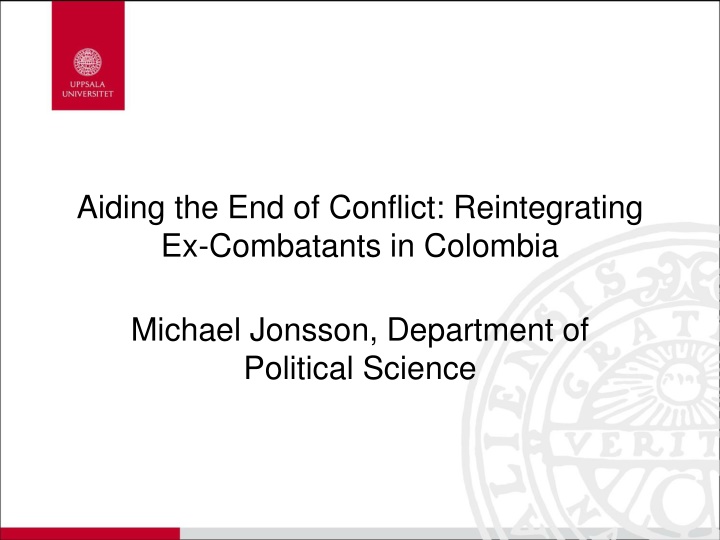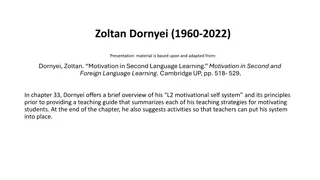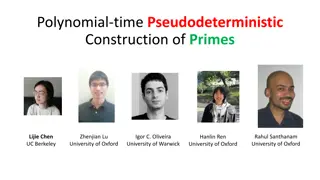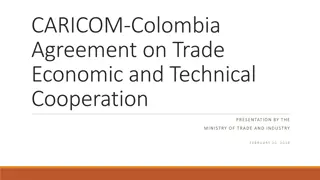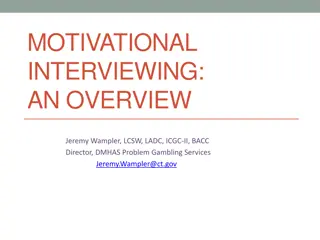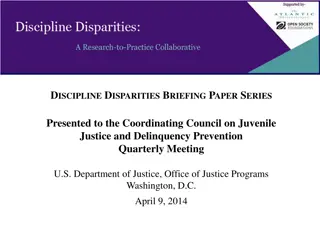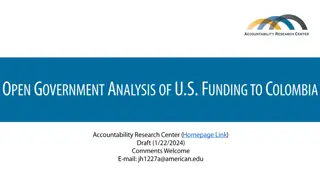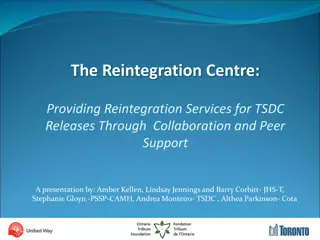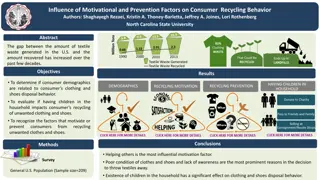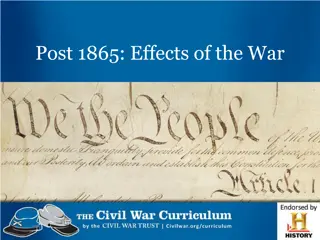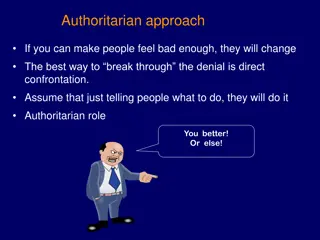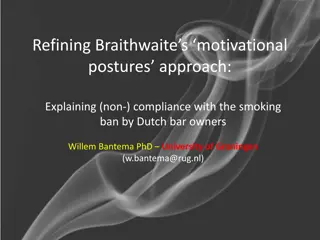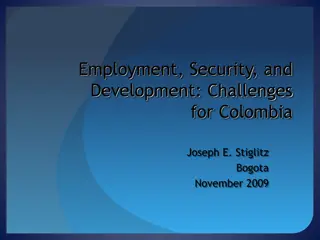Reintegrating Ex-Combatants in Colombia: A Study on Motivational Changes and Defections
This research delves into the decline of FARC in Colombia, focusing on the factors influencing ex-combatants' recruitment, motivations, and defections. Insights from interviews and surveys reveal complex motives such as fear, belonging, and battlefield outcomes rather than just greed or grievances. The study also examines motivational changes over time and explores why FARC fighters defect, highlighting security concerns, family ties, and discontent with the organization.
Download Presentation

Please find below an Image/Link to download the presentation.
The content on the website is provided AS IS for your information and personal use only. It may not be sold, licensed, or shared on other websites without obtaining consent from the author.If you encounter any issues during the download, it is possible that the publisher has removed the file from their server.
You are allowed to download the files provided on this website for personal or commercial use, subject to the condition that they are used lawfully. All files are the property of their respective owners.
The content on the website is provided AS IS for your information and personal use only. It may not be sold, licensed, or shared on other websites without obtaining consent from the author.
E N D
Presentation Transcript
Aiding the End of Conflict: Reintegrating Ex-Combatants in Colombia Michael Jonsson, Department of Political Science
A Farewell to Arms Focus: Motivational change within rebel units over time. Data: 100 interviews, 700 survey responses. H1: Fear and belonging, not greed or grievance. H2: Motivational change due to battle-field outcomes. H3: Motivational divergence due to rebel unit function.
H1: Recruitment: No Master Motive in Sight Heterogenous motives: Twelve response-options, six prominent in survey. Structured by motive, social relationships single most important. Low tresholds to enter. Assymetrical information, poorly considered decision. High tresholds to exit. Primary motive Influence of friends Forced recruitment Secondary motive Lack of job opportunities Carry arms & uniform Affinity with ideology Family conflict Other Security Revenge Influence of partner Family tradition Resent the army 0.0 10.0 20.0 30.0 40.0 50.0
H2: Motivational change over time? Comparison between 1982-2001; 2002-2010 96% probability the motives are not different. Puzzling outcome. Explained by lack of consideration of long- term consequences.
H3: Motivational divergence due to function? Four fronts with specialized functions. Expectation: Develop different dominant motives. Findings: Intense non- state combat yes, others, no. Mid-level commanders often more important than function of rebel unit.
Why is FARC Losing Fighters? 3500 Demobilized 3000 Killed in combat 2500 2000 1500 1000 500 0 2002 2003 2004 2005 2006 2007 2008 2009 2010
Why did fighters defect? Motive Survey response Primary Secondary 43% to be with family or regain liberty . Security a major motive for defection. Interviews suggest that security was the main motive. Major risks associated with exiting FARC. Need strong push factors to leave. Ideology 12.2 7.8 4.5 5.0 24.2 4.0 20.2 20.3 4.5 2.3 6.6 3.6 3.3 38.0 3.5 23.2 1.0 10.4 100.0 7.8 4.9 2.9 2.4 21.0 1.7 19.3 9.2 1.3 2.9 2.7 0.9 1.4 59.5 3.0 26.1 0.4 30.0 100.0 Lack of ideology Injustices against the population Unfulfilled promises Greed Belonging Because of compa eros who demobilized To be with the family Security Difficulties in combat Mistreatment Threats against you Threats against the family Assasination of a family member Other For believing in the program of the state Regain liberty Commander's orders Other Total
Reintegration: AUC and FARC FARC 2002-2012 Individual demobilization. AUC 2004-2006 Mainly collectively, following informal peace agreement . In total 17000 individuals, between 1000-3000 annually. 32 000 in 3 years. Difficulty identifying fighters/ weeding out opportunistic non-combatants. 18 000 weapons handed in. Accumulated detailed knowledge of membership. Increasingly selective. Payments for war materials. Command and control broken through demobilization. Some persecuted. Specifically sought out MLCs. Many reintegrated with members of former units. Initially no specific track for MLCs.
Outcomes of reintegration AUC IFARC CFARC? Decreased displac. homicides, etc. Gradual conflict de-escalation. End major political conflict? National-level stability 23 500 (42.2%) left program. Why? Depends on pr. Exit Several thousand have died. Mainly problem for AUC ex-combatants. Face severe threats. Security AUC MLCs today lead BACRIM. Some transition, but not leaders. Potentially major problem. Leadership remobilization Major problem. Limited problem. Depends on MLC; challenge. Recidivism of foot-soldiers Turf-wars among successor groups. N/A. Likely problem. Territorial control
